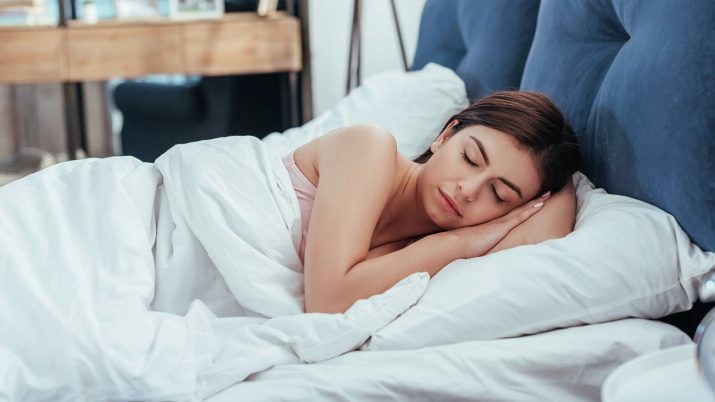Choosing a one-and-a-half mattress
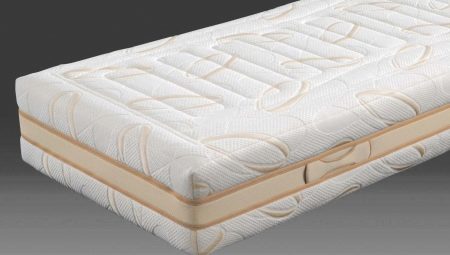
The search for a one-and-a-half mattress depends on a number of criteria. From the material in this article, you will learn how to choose the best option and what to look for when buying.
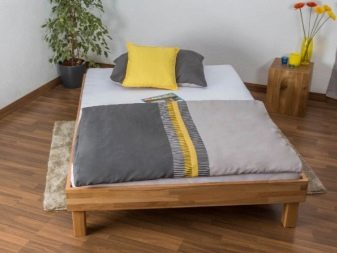
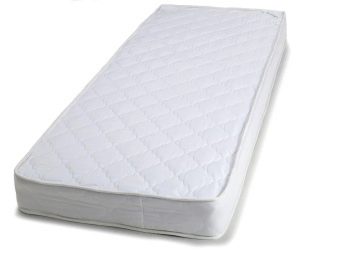
Standard sizes
The concept of "one and a half mattress" is typical for our country. In European countries, products with such parameters are classified as economy-class double mattresses.
The classic width (standard) of a one-and-a-half mattress is 120 cm. This is enough to comfortably accommodate one person. The parameter is considered conditional, since there are products with other sizes on sale.
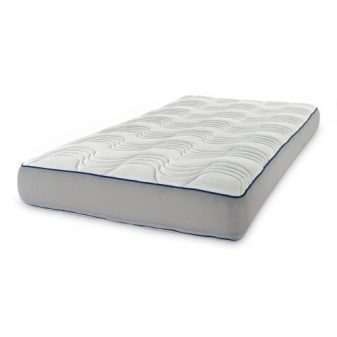
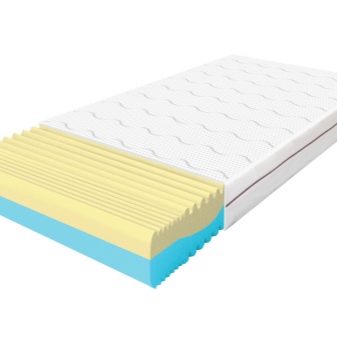
In addition to dimensions 120x190, 120x200 cm, trade marks produce products with a width of 140 and 160 cm. They are more comfortable for placement, can be used for beds and sofas of appropriate sizes.
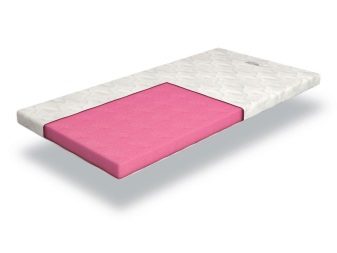

Additional dimensions
In addition to standard sizes, products with a width of 110, 130 cm are on sale. Atypical dimensions are intended for non-standard beds. In this case, the length of the mats can be different (190, 195, 200 cm).
Non-standard models are often made to order for measurements of specific beds (sofas). The width of one-and-a-half mattresses for children and adolescents ranges from 100 to 160 cm with a length of 140 to 190 cm.
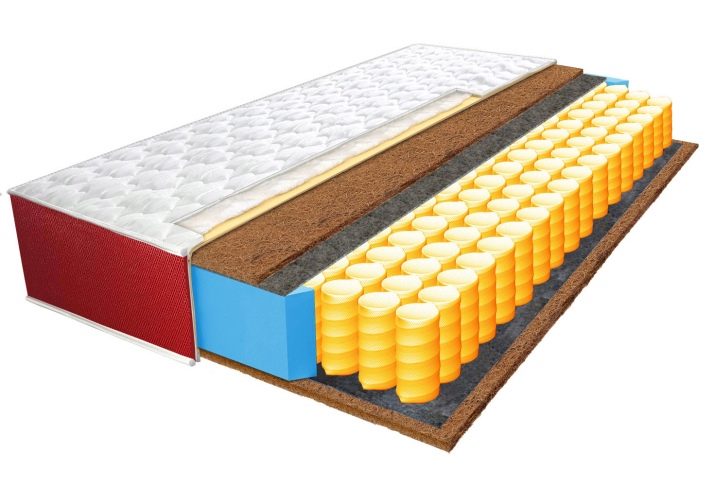
Products on podium beds and homemade furniture can be 132, 135, 145, 150, 155 cm wide. In this case, the length can also vary. In some cases, it exceeds 2 meters. Floor models may have parameters that do not match the dimensions of the furniture.
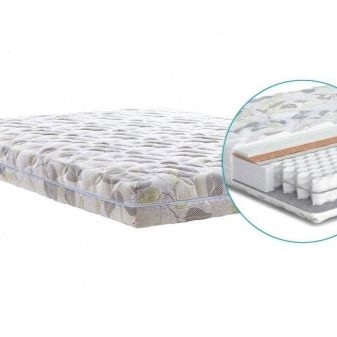
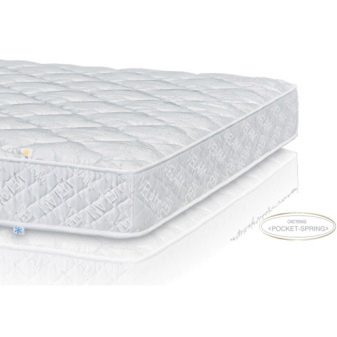
Height
One and a half mattress can have different thicknesses. In thin models, it ranges from 2-7-10 cm. For ordinary ones, it varies from 8 to 15 cm. Especially lush options can reach up to 30 cm in height.
The difference in height depends on the internal filling. Thin mattresses have 1 layer of padding. Universal analogs are often combined, consist of 2-4 layers of different types of filler. High mattresses - multi-layer mats.
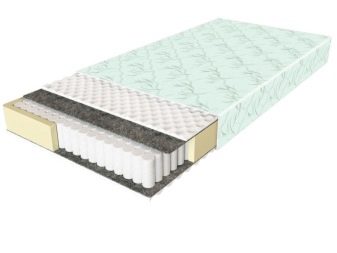
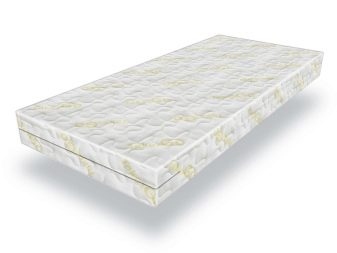
Excipients
Conventionally, all types of one-and-a-half mattresses are divided into 2 groups: with springs and without them. Each group has its own classification.
Spring loaded
Spring mattresses differ in the type of metal elements. The springs attached to the frame are divided into 2 subgroups: dependent and independent.
The springs themselves can have different shapes, which affect the level of the maximum permissible load. In addition, mattresses can have a different number of elements. The more there are, the more rigid the base.
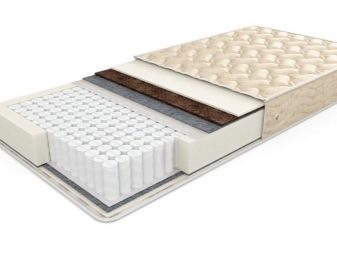
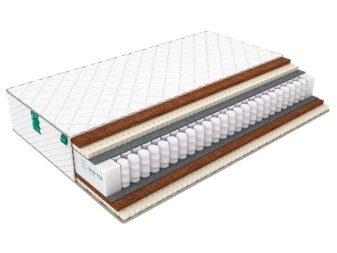
Products on dependent springs consist of elements connected not only to the frame, but also to each other. That is why, during operation, they quickly form the effect of a hammock, begin to creak and break.
Analogs of an independent type are not interconnected. They attach directly to the frame.
Each item is packed in a separate non-woven pouch. This eliminates friction, and therefore squeaks under load.
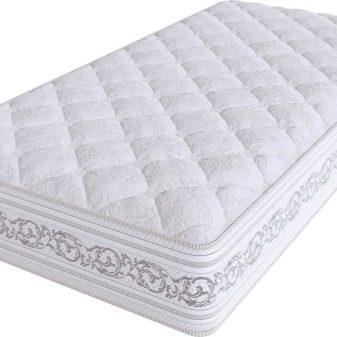
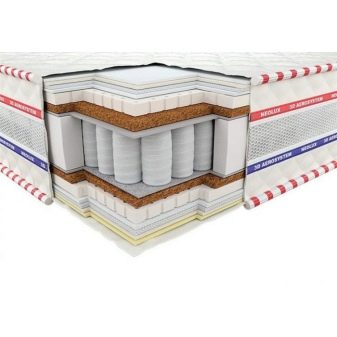
Both those and other varieties are complemented by layers of fillers of different compositions. This softens the base, extends the service life, and adds comfort in use. The type of filler used determines the level of hardness.
Springless
One-and-a-half mattresses without springs differ in the type of filler. The toughest of these is coconut coir. These mats have an orthopedic effect. They cannot be rolled. They are environmentally friendly.
Besides them, products made from natural and synthetic latex are in particular consumer demand. The performance characteristics of both fillers are approximately the same. However, the natural type of filling is more expensive.
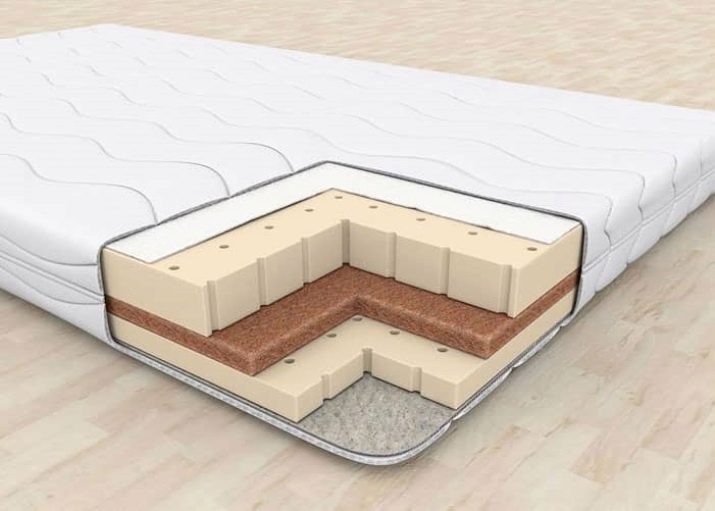
Latex mattresses are often perforated. They are durable, practical, take their original shape without load. They are of medium height.
In the production of one and a half, holofiber and struttofiber are used. Both materials are modern interlayers used in combined products. Their structure provides volume, protects the mats from premature wear.

The simplest filling options are cotton wool and foam rubber. They are used to make budget mattresses. Products lose their shape rather quickly, they get lost. Foam mats quickly turn yellow and crumble.
The original filling material is memory foam. It takes the form of the user under the weight of the user. Without a weight load, it returns to its original form. This material is durable, suitable for people with problems of the musculoskeletal system.

Upholstery
In the production of one-and-a-half type mattresses, materials with different compositions and interweaving of threads are used. They have a different texture (smooth, silky, voluminous, quilted).
The textiles used can be conventional or refined. For example, in addition to coarse calico, teak, jacquard and knitwear, brands use fabrics with different impregnations.
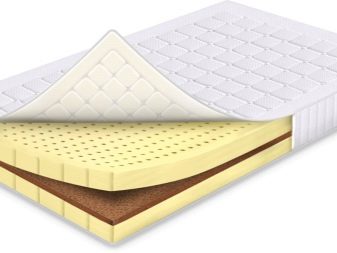
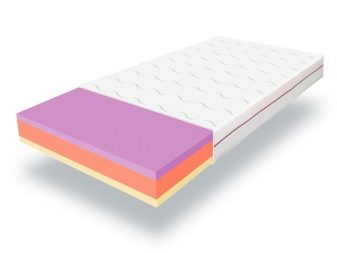
The simplest of them are treated with compounds from fungus, bacteria, static electricity. Modern upholstery materials provide excellent breathability. They can quickly absorb moisture and evaporate it.
Materials can be classic and waterproof. On sale there are mattresses with protection from getting wet. They are bought for children, the elderly and bedridden patients.
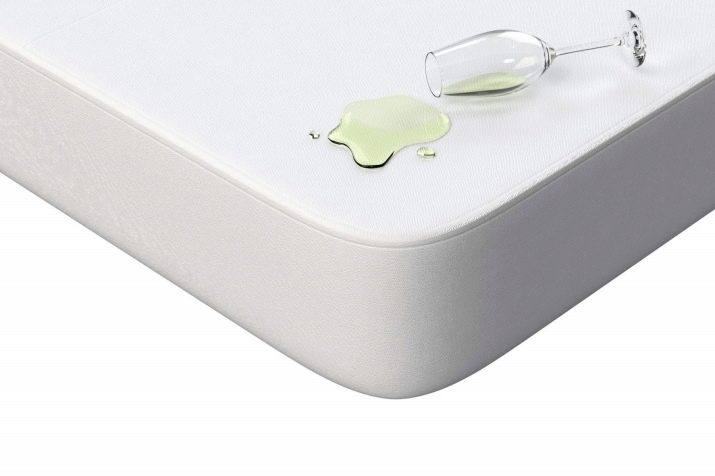
Some materials are equipped with an anti-stress effect. Some contain silver fibers. Other fabrics have a system of thermoregulation and thermal control.
The cover type can be removable or non-removable. Products of the first type are less practical, since they are often difficult to clean. Options for the second group include dry cleaning and machine wash. They are put on with a zipper.
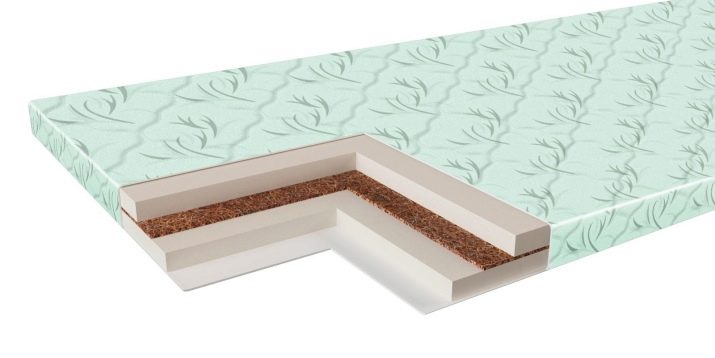
Criterias of choice
When choosing the best model of a one-and-a-half mattress for a bed, a number of criteria must be taken into account.
It is important to choose the right size: the parameters of the mat should correspond to the internal parameters of the furniture. The ideal length should exceed the user's height by 20-30 cm. If it is smaller, discomfort will be created during use.
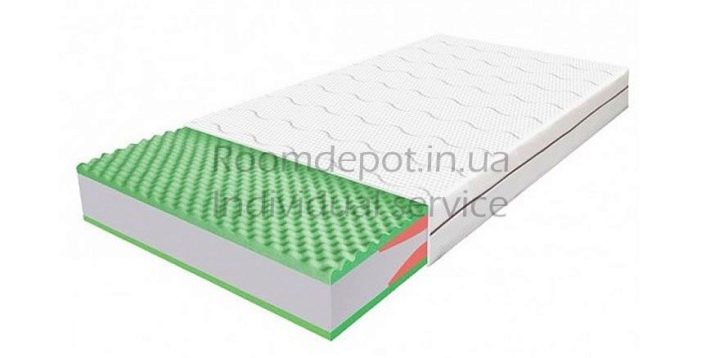
If the dimensions do not fit the furniture, the mattress will hunch or slide on the slats of the bed. It is not necessary to select a mattress according to the size of the old one. This product has already been deformed during operation.
If there are no contraindications, the height is selected so that it rises above the sides of the bed box by 2-5 cm. If the mattress is taken for a couple, it should be comfortable for two to sleep on.

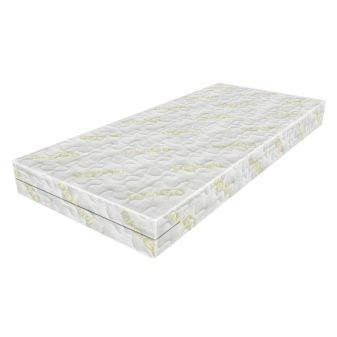
It is worth considering options for the double-sided type. If the weight is different, you can buy a product with a different degree of hardness of the halves.
One-and-a-half mattresses have different levels of maximum permissible weight load. You need to choose your option taking into account your own body weight. At the same time, it is advisable for children to choose models with a height of 7-15 cm.
Adult models can be thin or voluminous. The type of filling is selected based on their own health. If a person has a back pain, it is best to consult a doctor. He will tell you which model will suit the patient better than others. It will be difficult for such a person to sleep on a regular model.
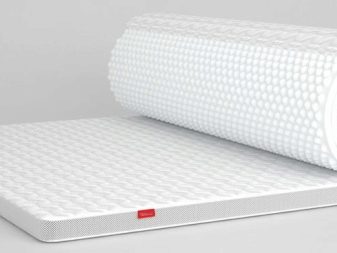

For example, older people are better off purchasing soft mattresses. Athletes, on the other hand, need tough models. For teenagers - products with medium hardness. It is worth considering models with an orthopedic effect (springless and spring-loaded).
When choosing a combined spring-type model, it is worth considering an independent type option. When the body is loaded, only the working springs are pressed. They do not pull adjacent ones, therefore they do not create the effect of a hammock.

If you choose between the shape of the springs, you should give preference to the cylindrical one. In comparison with analogs "hourglass" they have a large weight load. Therefore, they are more durable. The number of springs per m2 can exceed 1000.
If there are no health problems, you can choose any type of product. Including you can buy a double-sided version with different levels of rigidity of the sides. Models for teenagers are selected taking into account the complete set and the stock of length.

Back-to-back placement is unacceptable. Nothing should interfere with stretching in a dream and freely turning in different directions. This applies to both width and length. The shape of the mat is matched to the shape of the bed (sofa, podium).
The mattress cover must be hypoallergenic, dense and breathable. The texture is selected based on their own preferences. Some people like rough jacquard covers. Others prefer products with knitted mattress toppers.
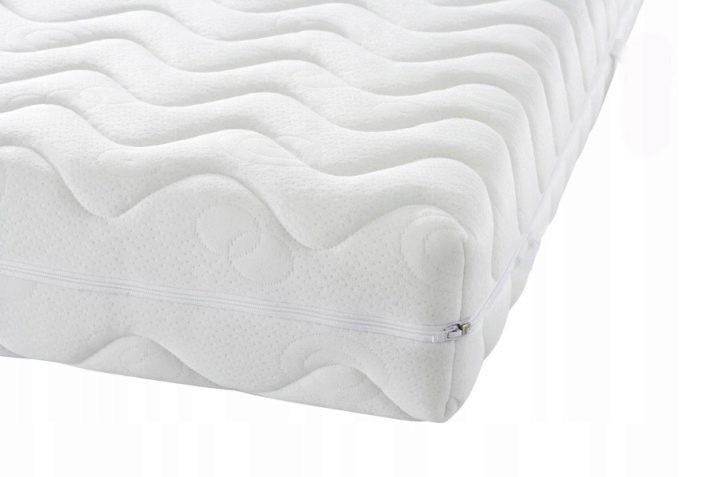
In terms of practicality, jacquard options are better. Knitted counterparts are not resistant to snags and peeling. The color of the mattress topper can be white, gray, blue, pinkish. Teenage options can be colorful.
If the mattress has a removable cover, you should open it and pay attention to the type of filling. This way the buyer will see the quality of the packing. It is important to demand from the seller a certificate of quality and compliance with the necessary requirements.
What matters is the posture in which the person is used to sleeping. If he falls asleep on his side or back, it is worth choosing a model of the universal or rigid type. Those who like to fall asleep on their stomachs are better off choosing soft models.
